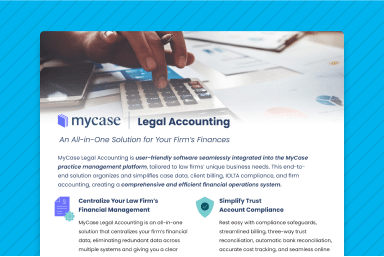Business Resiliency Planning for Law Firms – Step 5: Implement Your Plan

For the past month or so I’ve covered the ins and outs of establishing a resiliency plan for your law firm. Why create a resiliency plan? Because by doing so you ensure that your firm gets up and running quickly, and is also able to operate smoothly and efficiently in the weeks and months following an unexpected disruption. In other words, resiliency plans are simply a matter of good business.
That being said, creating a plan requires careful thought and planning, which is why I wrote this 5-part blog post series to get you started. In Part 1 we discussed why it’s important to plan for future disruption and explored the many benefits of doing so. Then, in Part 2 we focused on establishing a committee to create your firm’s resiliency plan and the importance of tasking that committee to identify your firm’s goals before creating the plan. In Part 3 we talked about how to determine what the essential elements of your firm’s business resiliency plan should be. And then last week, in Part 4, we explained why it’s important to review, test, and then revise your plan prior to implementing it firm-wide.
Which brings us to the topic of today’s post: implementing your plan.
Now that you’ve created a plan, shared it with stakeholders, and incorporated their suggestions into the final plan, it’s time to roll it out to the entire law firm. The way in which you do this will necessarily depend on the size of your firm. For smaller firms, this can occur during a single meeting with your entire staff. For larger firms, you may want to hold a meeting with leadership and apprise them of the plan essentials and then allow them to hold separate meetings with their employees or team.
Make sure that written protocols are distributed and also readily available online in a location that is readily accessible remotely. All firm employees should have access to the resiliency plan even if they’ve been displaced from the office. Ensure that all firm employees know where it can be found online and how to access it.
All employees should leave the meeting(s) regarding the resiliency plan with a full understanding of why the plan was created, what their roles are under the plan, and what is expected of them under the plan. Make sure that employees understand that the end goal of the plan is to mitigate all potential risks and keep the firm operating in the face of uncertain and unexpected circumstances. Explain that the plan provides the firm with a competitive edge and ensures financial stability even in the midst of uncertainty.
Answer any and all questions that your firm’s employees may have. Provide transparent answers and be open to any and all suggestions. It’s possible that your employees may offer a perspective that was overlooked during the planning process. After training and obtaining feedback, if the planning committee deems it to be necessary, incorporate relevant feedback into the plan, and distribute the updated plan to your firm’s workforce.
Once you’ve done that, your firm should fully prepared for the unexpected, and you can rest easy knowing that you’ve done everything in your power to reduce future uncertainty. Now you can pat yourself on the back for a job well done. You’ve taken the necessary steps to protect your firm’s reputation and bottom line in both the short term and the long term.
If your firm doesn’t already have a plan in place, there’s no time like the present! What better time than now to focus on creating a business continuity plan that your firm can rely on no matter what the future brings your way?
And speaking of the future, creating a business resiliency plan is only part of preparing your firm for whatever may come. For even more ideas on how to take steps to future-proof your law firm, make sure to check out the video recording of this recent webinar: “How to Safeguard Your Law Firm Against Future Disruption.” In it you’ll find lots of great ideas on how to prepare your firm for the future.


